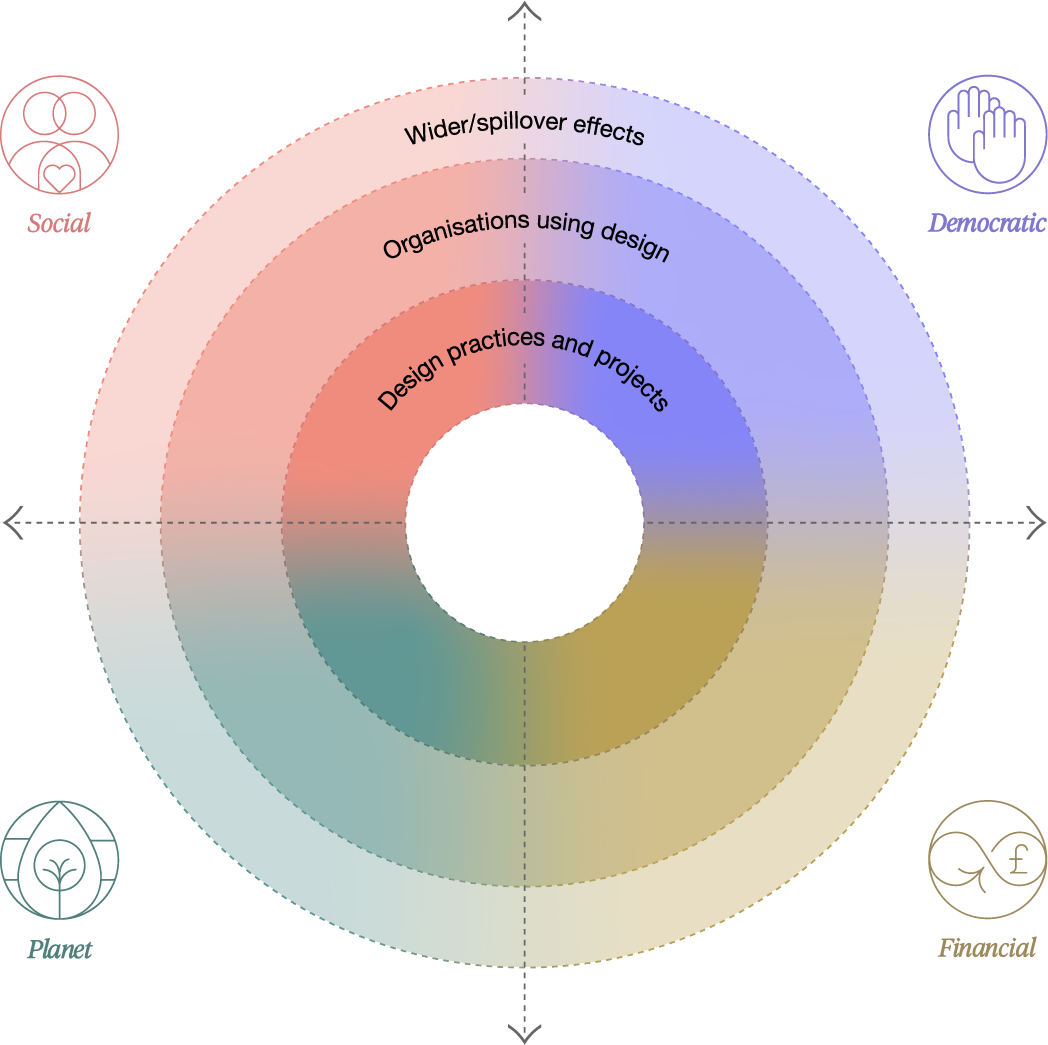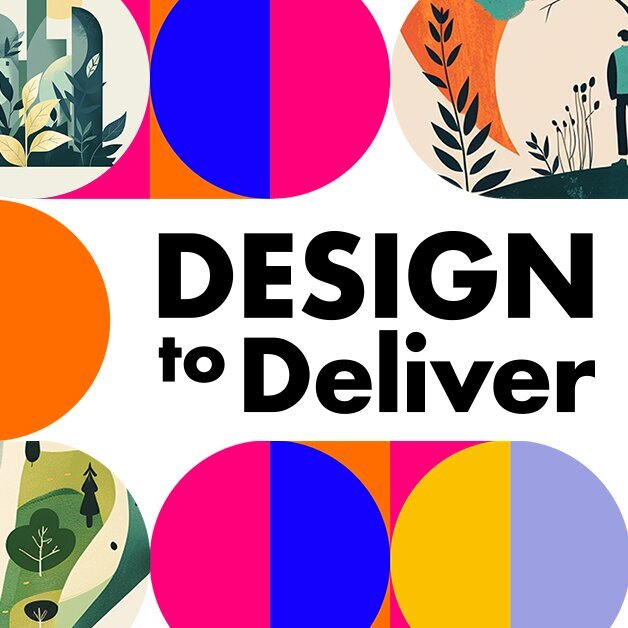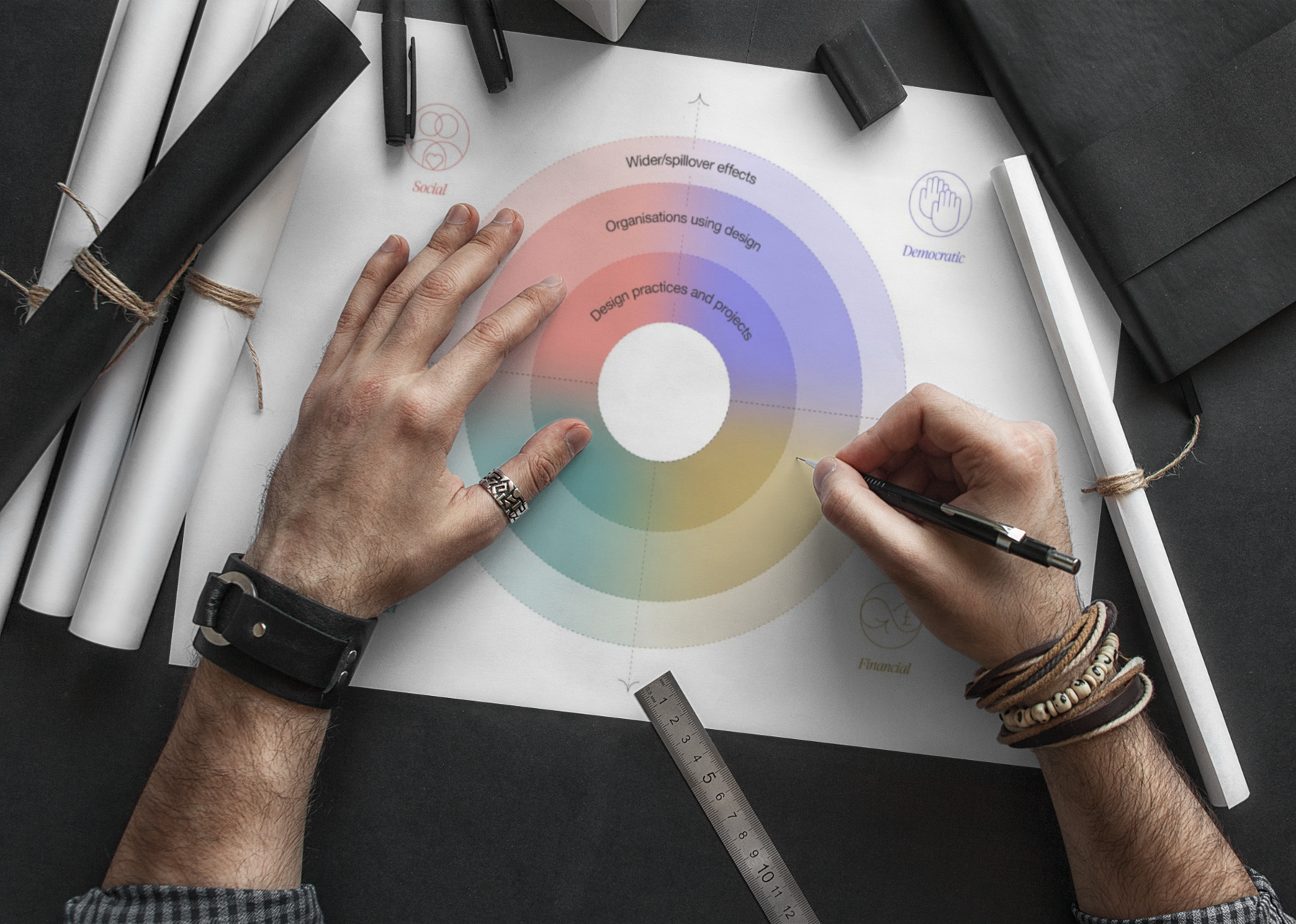The Design Value Framework
As part of the 2021 Design Economy we developed a framework for designers and commissioners to identify and assess the wider social, environmental and democratic impacts of their work.
The framework builds on design sector specific tools.
It provides, for the first time, a single framework for the whole of the design economy to use together, and across a holistic set of values.

 This work by the Design Council is licensed under a CC BY 4.0 license.
This work by the Design Council is licensed under a CC BY 4.0 license.
The Design Value Framework offers a way to understand and communicate the full impact of design. It helps teams track what matters and tell compelling stories of the value they create. At its core are four areas of impact: Social, Financial, Democratic, and Environmental. It’s designed to work at multiple levels — from single projects to entire organisations — and includes practical indicators that can be tailored to context.
Scroll down to explore the impact areas and see how they come to life in real-world innovation.
Social Impact
Design builds stronger, more inclusive communities.
Design helps teams work with — not just for — the people they aim to serve. It supports collaboration, fosters empathy, and ensures solutions are grounded in lived experience.
You’ll see the impact in more engaged communities, better collaboration between partners, and increased awareness of social issues. The framework helps track this through indicators like improved accessibility, behavioural change, and strengthened relationships over time.
Financial Impact
Design makes ideas sharper — and strategies smarter.
Design clarifies direction, reduces risk, and adds commercial value. It helps organisations ask the right questions early, avoid missteps, and focus resources where they’ll count.
You might notice clearer business models, stronger cases for funding, or faster development cycles. The framework suggests indicators such as cost savings from prototyping, improved investment readiness, or early identification of scalable opportunities.
Democratic Impact
Design gives people a voice in shaping change.
By making information more visible and decisions more inclusive, design supports transparency and shared ownership. It brings clarity to complexity and encourages meaningful participation.
Look for signs like greater alignment among stakeholders, more inclusive planning processes, and tools that help people understand — and influence — the bigger picture. The framework helps you track these shifts through indicators of agency, accessibility, and shared decision-making.
Environmental Impact
Design aligns ideas with the needs of the planet.
Design has the power to regenerate, not just sustain. By embedding ecological thinking early, it creates solutions that work with natural systems —not against them.
Whether it's designing for circularity, reducing waste, or shifting perceptions of nature’s value, the impact is tangible. The framework supports this with indicators like environmental footprint reduction, nature-positive outcomes, and integration of ecological knowledge into design decisions.
Case studies: Putting the Framework into Practice
The Design Value Framework isn't just theoretical — it's already helping organisations design more meaningful, measurable impact.

Design to Deliver (D2D) — Catalysing Nature-Positive Innovation


